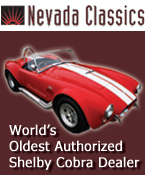 
 Main Menu
Main Menu
|
 Nevada Classics
Nevada Classics
|
 Advertise at CC
Advertise at CC
|
 November 2024
November 2024
|
| S |
M |
T |
W |
T |
F |
S |
| |
|
|
|
|
1 |
2 |
| 3 |
4 |
5 |
6 |
7 |
8 |
9 |
| 10 |
11 |
12 |
13 |
14 |
15 |
16 |
| 17 |
18 |
19 |
20 |
21 |
22 |
23 |
| 24 |
25 |
26 |
27 |
28 |
29 |
30 |
|
 CC Advertisers
CC Advertisers
|
|

04-03-2009, 07:46 PM
|
 |
CC Member

|
|
|
Join Date: Oct 2002
Location: Eagle,
Ne.
Cobra Make, Engine: 1966 Lone Star 427SC.
Posts: 4,307
|
|

 Not Ranked
Not Ranked
 Comparison-60's 427so vs New 427so ?
Comparison-60's 427so vs New 427so ?
I would like to ask, how many of you would like to see a comparison build and discussion in a magazine, between the 60's 427 side oiler, versus 40 + years later aluminum side oiler's, with todays new technology and parts ?
Block molds.
Bore size.
Strength.
Cooling.
Oiling.
Aluminum vs iron.
Rotating assembly's.
Cams.
Valve trains.
Intakes.
Fueling/carburetor. (I don't think it will be E.F.I) 
Electronics.
ect...... 
Any other input is welcome.
__________________
Regards,
Kevin
|
-
Advertising


04-03-2009, 09:32 PM
|
 |
Senior Club Cobra Member

|
|
|
Join Date: Jan 2008
Location: McAllen,
TX
Cobra Make, Engine: Butler...488" hi-rise, dry-sump FE s/o w/stacks
Posts: 543
|
|

 Not Ranked
Not Ranked
I'll read every word.....would be very interesting and we might learn something.
__________________
Russ 
|

04-03-2009, 09:57 PM
|
|
CC Member

|
|
|
Join Date: Jul 2008
Location: Driftwood,
TX
Cobra Make, Engine: Contemporary Cobra, 427 side oiler
Posts: 1,850
|
|

 Not Ranked
Not Ranked
I think there are a LOT of people out there that have no idea that a second generation 427 even exists. While the comparison would be cool, I personally would find a lot of interest in the differences in the manufacturing process and how Pond and Genesis have improved that aspect of it.
|

04-03-2009, 10:06 PM
|
 |
CC Member

|
|
|
Join Date: Oct 2002
Location: Eagle,
Ne.
Cobra Make, Engine: 1966 Lone Star 427SC.
Posts: 4,307
|
|

 Not Ranked
Not Ranked
I agree, that's why I mentioned about the mold. I'm sure there's been advances in technology in 40 + years, and I'm very interested in compounds/metals and casting methods ect.
__________________
Regards,
Kevin
|

04-04-2009, 06:04 AM
|
 |
CC Member

|
|
|
Join Date: Jul 2001
Location: Senoia,
Ga.
Cobra Make, Engine: 427SO with big twin autolite inlines on custom intake, jag rear, top loader, wembeldon white, guardsmen blue stripes
Posts: 3,155
|
|

 Not Ranked
Not Ranked
Other than lighter components, hotter ignitions, roller rockers, roller cams and possibly newer cam profiles, I don't see any noticeable differences. IMO, the biggest difference is fuel, in the 60's you could buy 103 octane everywhere and run 12-13+ to 1.
__________________
Perry
Remember!, there's a huge difference between a 'parts' changer, and a mechanic.
|

04-04-2009, 07:32 AM
|
 |
CC Member

|
|
|
Join Date: Oct 2002
Location: Eagle,
Ne.
Cobra Make, Engine: 1966 Lone Star 427SC.
Posts: 4,307
|
|

 Not Ranked
Not Ranked
You have to add the better density of the blocks of todays blocks, iron and aluminum.
I would be very curious, with a comparison of sonic testing.
Thicker and stronger bores.
The high tech machining tools used today for instance, the line boring for the crank, cam and cylinders.
Better materials for even the bearings.
Yeah, the good old days of higher octane !
I built a Pro-Street Camaro many years ago, and bought aviation fuel for, if I can remember, like $1.75 per gallon. 
We need to get Keith on this thread ! Keith (the man) Craft.....where are you bud ? 
__________________
Regards,
Kevin
|

04-04-2009, 07:43 AM
|
 |
Senior Club Cobra Member

|
|
|
Join Date: Dec 2001
Location: Shasta Lake,
CA
Cobra Make, Engine:
Posts: 26,593
|
|

 Not Ranked
Not Ranked
It would be interesting. I believe that with todays technology the engines would be better and more reliable.I know my 1964 - 427 would not make nearly the power or stand up to the long periods of hard driving that todays engines do. And also back then, the aluminum parts and stuff were more relegated to the racing where they could take the engine apart after each race.As I recall, some of that stuff didn't last well for street driving.
Ron
|

04-04-2009, 12:15 PM
|
|
CC Member

|
|
|
Join Date: Mar 2003
Location: Arkadelphia, AR,
AR
Cobra Make, Engine: Kirkham 427 brushed aluminum with Keith Craft 527C.I. all aluminum FE
Posts: 992
|
|

 Not Ranked
Not Ranked
 Old verses new
Old verses new
There has been several design improvements made on all of the new parts. You take the week points of the old stuff and improve the part from there.
Take the blocks for example, the cylinders were thin in most cases with the caps and blocks only being able to handle about 750 HP before cracking the mains or caps. The cylinders are much thicker on the new blocks which keeps the bores straighter under high loads for better ring seal. You can run more compression without cracking the cylinders. The decks are much thicker as well to help hold the head gaskets better. The main caps are stronger with more material in the main area for more strength. You can bore the blocks bigger without fear of a weak cylinder. The water jackets have been redesigned for better cooling and water circalation through the block. The thicker cylinders also do not heat the water up as much as the thinner cylinders. The oiling system is pretty much the same with the passages being drilled out bigger and some better alignment in the main saddles.
The heads have thicker decks on them as well with improved port designs using what has been learned over the last 40 years. All of the other parts have been improved as well for better life and durability.
I quite building FE engines for a while in the 90s except for the all out race stuff because I was tired of using the old worn out parts that would not hold up. It was more trouble than it was worth and the parts were not very good for the most part. With what we learned from the race stuff we worked with vendors to improve blocks, heads, cranks and rocker arm systems. We now have some good parts to build FE engines with so that we do not have to use the old worn out stuff. I never thought we would be able to build a FE engine with all new parts top to bottom.
This is why we build about 80 to 100 FE engines a year and sell a lot of crank kits, heads and other parts that we would not have done 10 years ago.
Thanks, Keith Craft
__________________
Keith C
|

04-04-2009, 12:21 PM
|
|
CC Member

|
|
|
Join Date: Dec 2004
Location: Kansas City,
KS
Cobra Make, Engine: jbl
Posts: 2,291
|
|

 Not Ranked
Not Ranked

Quote:
Originally Posted by Keithc8

There has been several design improvements made on all of the new parts. You take the week points of the old stuff and improve the part from there.
Take the blocks for example, the cylinders were thin in most cases with the caps and blocks only being able to handle about 750 HP before cracking the mains or caps. The cylinders are much thicker on the new blocks which keeps the bores straighter under high loads for better ring seal. You can run more compression without cracking the cylinders. The decks are much thicker as well to help hold the head gaskets better. The main caps are stronger with more material in the main area for more strength. You can bore the blocks bigger without fear of a weak cylinder. The water jackets have been redesigned for better cooling and water circalation through the block. The thicker cylinders also do not heat the water up as much as the thinner cylinders. The oiling system is pretty much the same with the passages being drilled out bigger and some better alignment in the main saddles.
The heads have thicker decks on them as well with improved port designs using what has been learned over the last 40 years. All of the other parts have been improved as well for better life and durability.
I quite building FE engines for a while in the 90s except for the all out race stuff because I was tired of using the old worn out parts that would not hold up. It was more trouble than it was worth and the parts were not very good for the most part. With what we learned from the race stuff we worked with vendors to improve blocks, heads, cranks and rocker arm systems. We now have some good parts to build FE engines with so that we do not have to use the old worn out stuff. I never thought we would be able to build a FE engine with all new parts top to bottom.
This is why we build about 80 to 100 FE engines a year and sell a lot of crank kits, heads and other parts that we would not have done 10 years ago.
Thanks, Keith Craft
|
there's your article right there. nice input keith.

|

04-04-2009, 02:02 PM
|
 |
CC Member

|
|
|
Join Date: Oct 2002
Location: Eagle,
Ne.
Cobra Make, Engine: 1966 Lone Star 427SC.
Posts: 4,307
|
|

 Not Ranked
Not Ranked
lol, I agree, there's the artical right there Keith. 
It's great having a engine builder that specializes in FE's, for us cobra people but also one that pays attention to our needs and answered questions, no matter how trivial a question may be, to high tech one's as well.
Thank you Keith.
__________________
Regards,
Kevin
|

04-05-2009, 07:59 AM
|
 |
CC Member

|
|
|
Join Date: Oct 2002
Location: Eagle,
Ne.
Cobra Make, Engine: 1966 Lone Star 427SC.
Posts: 4,307
|
|

 Not Ranked
Not Ranked
Keith, since we all know that the old engine had it's problems with cooling, would you explain the old system and what has been changed with the new engines. Percentage wise, how much better is the new one ?
__________________
Regards,
Kevin
Last edited by FUNFER2; 04-05-2009 at 08:01 AM..
|

04-05-2009, 11:26 AM
|
|
CC Member

|
|
|
Join Date: Mar 2003
Location: Arkadelphia, AR,
AR
Cobra Make, Engine: Kirkham 427 brushed aluminum with Keith Craft 527C.I. all aluminum FE
Posts: 992
|
|

 Not Ranked
Not Ranked

Well I feel that there are several things that have helped the cooling of the new engines. The blocks have the thicker cylinders which will disapate the heat from the combustion and friction of the piston and rings better. The thinner cylinder blocks put more of the heat into the water. The aluminum heads used on most of these engines also gets rid of the heat better than cast iron and this is why most aluminum block engines will run a little cooler than there cast iron counter part. The water jackets in the new blocks have had some of the restrictions taken out of them that the original blocks had. This lets the water circulate better and more evenly through the block as well for better cooling. Then you have better water pumps available from Edelbrock that helps as well along with some better radiators. Put all of this together and you have a much more effective cooling system than before.
The machining has come a ways as well with the CNC machines that we use, honing with torque plates for better ring seal, better machined blocks, smaller bearing journals for less bearing speed on the rods, lower tension rings because we can seal them better with the honing process and the plasma moly material, better camshaft designs and a lot more choices along with a lot of dyno testing and racing to figurte out what works have all help create a better engine. Good luck.
Thanks, Keith
__________________
Keith C
|

04-05-2009, 02:55 PM
|
|
CC Member

|
|
|
Join Date: Dec 2000
Location: Florence,
AL
Cobra Make, Engine: FFR #4227, 302; About to take delivery on B&B Street Coupe (Daytona)
Posts: 107
|
|

 Not Ranked
Not Ranked
I vote against a comparison build and magazine writeup.
That would give me just one more things to add to the list of things I really, really want but can't afford.
Seriously, that would be a super interesting project.
__________________
Lawrence Perry
|

04-05-2009, 07:56 PM
|
 |
CC Member

|
|
|
Join Date: Oct 2002
Location: Eagle,
Ne.
Cobra Make, Engine: 1966 Lone Star 427SC.
Posts: 4,307
|
|

 Not Ranked
Not Ranked
Lawrence- that's funny.
What the heck, it's only money. 
__________________
Regards,
Kevin
|

04-06-2009, 05:12 AM
|
 |
CC Member

|
|
|
Join Date: Jul 2001
Location: Senoia,
Ga.
Cobra Make, Engine: 427SO with big twin autolite inlines on custom intake, jag rear, top loader, wembeldon white, guardsmen blue stripes
Posts: 3,155
|
|

 Not Ranked
Not Ranked
I'm reminded of the 60's 427 NASCAR engines, running 7K rpm for 3-4 hours with a standard coil, dual point distributor and cast iron rocker arms is unthinkable today. I've hit 7K RPM maybe 3-4 times in the 15K I have on my engine and I cringed every time.
I seriously doubt a today's FE 427 would do that much better, how could it?.
__________________
Perry
Remember!, there's a huge difference between a 'parts' changer, and a mechanic.
|

04-06-2009, 05:37 AM
|
 |
CC Member

|
|
|
Join Date: Jul 2005
Location: Virginia Beach, Va & Port Charlotte, Fl.,
Posts: 2,284
|
|

 Not Ranked
Not Ranked
Quote:
Originally Posted by 427 S/O

I'm reminded of the 60's 427 NASCAR engines, running 7K rpm for 3-4 hours with a standard coil, dual point distributor and cast iron rocker arms is unthinkable today. I've hit 7K RPM maybe 3-4 times in the 15K I have on my engine and I cringed every time.
I seriously doubt a today's FE 427 would do that much better, how could it?.
|
There's a boat load of "windowed" OEM S/O blocks out there that might argue that 7K rpm theory with you.. 
The new structurally stronger, more rigid blocks running the w-i-d-e BBC rods will definately support higher rpms.
Dave
__________________
Too many toys?? never!
|

04-06-2009, 05:45 AM
|
 |
CC Member

|
|
|
Join Date: Oct 2008
Location: Avon,
NY
Cobra Make, Engine: 1969 Mustang Fastback Pro-Street, constantly changing ongoing project!
Posts: 746
|
|

 Not Ranked
Not Ranked
Quote:
Originally Posted by undy

There's a boat load of "windowed" OEM S/O blocks out there that might argue that 7K rpm theory with you.. 
The new structurally stronger, more rigid blocks running the w-i-d-e BBC rods will definately support higher rpms.
Dave |
I was talking with Dove Performance (Ed) & he told me they are spinning these at 9k with no damage! (The FEs with the turned down crank journals & fitted with BBC Chevy rods)
__________________
Mick
(Of The Troops & For The Troops)
Life is not a journey to the grave with the intention of arriving safely in a pretty and well-preserved body; but rather a skid in broadside, thoroughly used up, totally worn out, and loudly proclaiming, "WOW, WHAT A RIDE!"
|

04-06-2009, 06:09 AM
|
 |
CC Member

|
|
|
Join Date: Jul 2001
Location: Senoia,
Ga.
Cobra Make, Engine: 427SO with big twin autolite inlines on custom intake, jag rear, top loader, wembeldon white, guardsmen blue stripes
Posts: 3,155
|
|

 Not Ranked
Not Ranked
undy: 7K rpm 'theory'?.....I really don't want to take the time for a history lesson, best you do that yourself.
__________________
Perry
Remember!, there's a huge difference between a 'parts' changer, and a mechanic.
|

04-06-2009, 08:54 AM
|
 |
CC Member

|
|
|
Join Date: Jul 2001
Location: Senoia,
Ga.
Cobra Make, Engine: 427SO with big twin autolite inlines on custom intake, jag rear, top loader, wembeldon white, guardsmen blue stripes
Posts: 3,155
|
|

 Not Ranked
Not Ranked
I talked to Lee Holman after my last post to get his opnion, and he said don't forget about the 24 hr. Le Mans. Where the (60's) 427 S/O won BTW!.
__________________
Perry
Remember!, there's a huge difference between a 'parts' changer, and a mechanic.
|

04-06-2009, 10:40 AM
|
|
CC Member

|
|
|
Join Date: Aug 2007
Cobra Make, Engine: 31XX Car
Posts: 374
|
|

 Not Ranked
Not Ranked
 New Engine Woes
New Engine Woes
With all the touting of newly produced FE parts, everyone seems to be forgetting the biggest shortcomings. These new engine parts are often produced by small outfits which don't have the resources or production volumes don't support the level of extensive QA that Ford had. The inspector at these shops can often be the owner or has to report to the owner and what gets let out the door will be correlated with how profits are going.
Even when parts are coming out looking pretty good, they still usually have more variability than OE Ford parts. For example, I've seen at my local engine builder how you often have to play games with the new parts like elongating pushrod holes in intakes because of interference, which is far more rare in OE parts.
From what I've seen designs of new aftermarket parts are also typically not developed to the same degree as OE items with the same diverse group of highly educated & skilled engineers and technicians from various disciplines (structural experts, metallurgists, etc). Sure, certain areas of the new parts have been beefed up, but that is often accompanied by alot of extra material where it isn't necessary. For example, I've seen numerous Blue Thunder heads at my local engine guy's shop and the general production quality looks decent (better than Dove), but they are so porky with excess aluminum it's not funny. That approach wouldn't make it far in F1 circles.
For what the original 427 engine was intended for, less than 500hp but usually good for at least 600, it's hard to beat the product. There are just a few areas (like rod bearings a bit too large in diameter and too narrow, which is primarily responsible for the windowed blocks) that if addressed make it a nice engine - and most of that stuff was being corrected by race teams back in the 60's, like using Chrysler rod bearings. The biggest problem with the old parts is finding anything decent left, as Keith has mentioned. All the problems you can experience with a new aftermarket part can sometimes negate the advantages.

|
 Posting Rules
Posting Rules
|
You may not post new threads
You may not post replies
You may not post attachments
You may not edit your posts
HTML code is Off
|
|
|
All times are GMT -7. The time now is 07:16 PM.
|




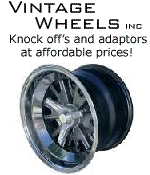

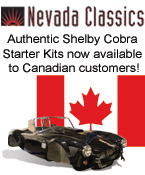
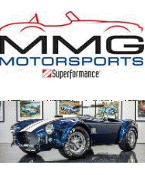
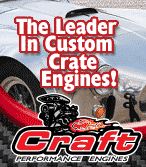
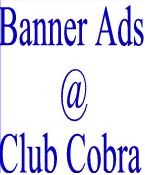
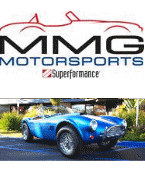
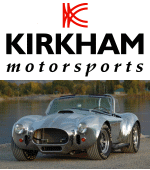

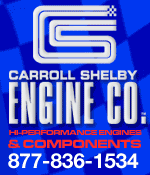














 Linear Mode
Linear Mode



